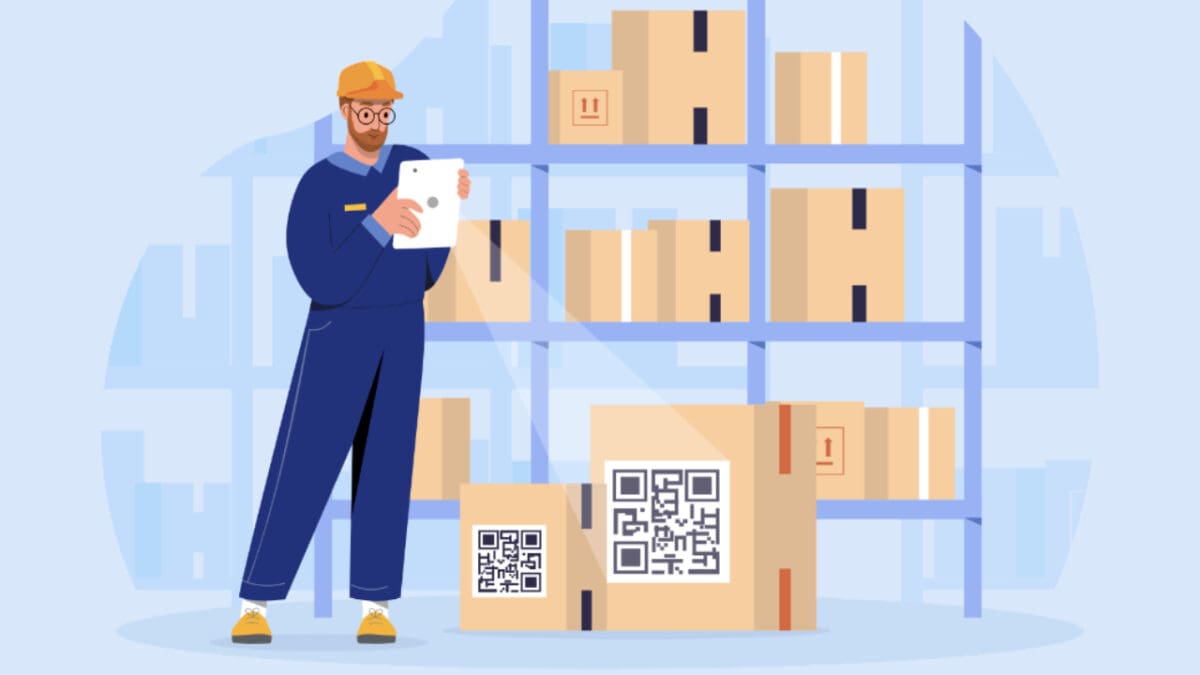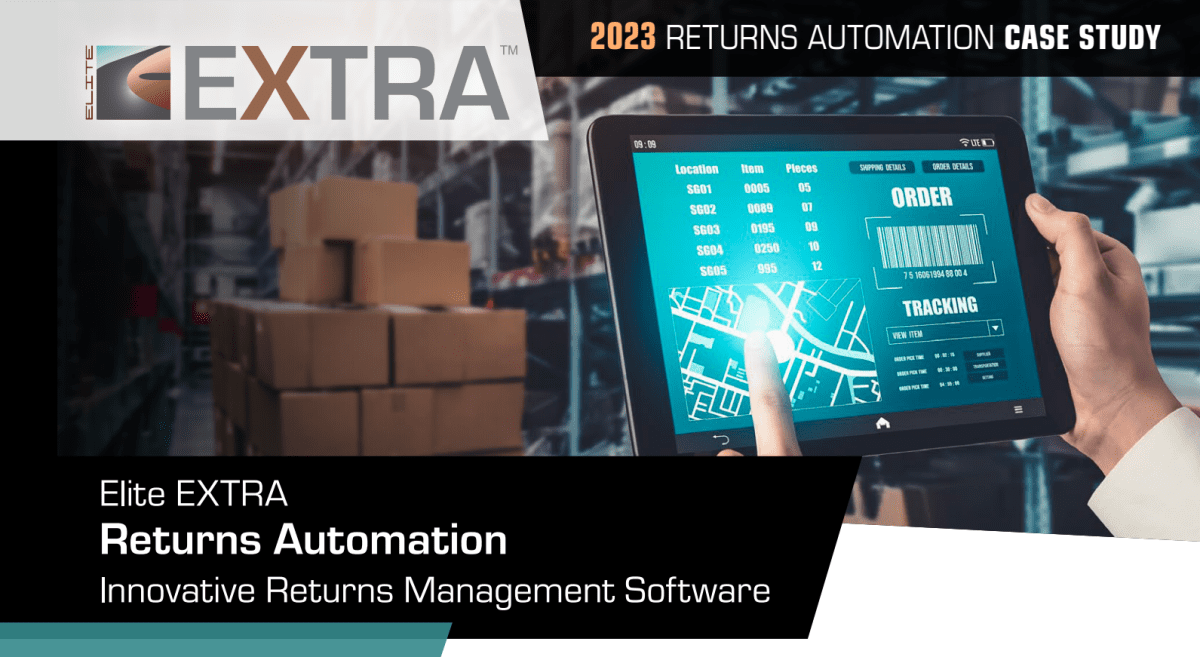
Managing product returns is a crucial task for retailers and eCommerce companies. With online sales continuing to rise, returns are becoming an increasingly common problem across industries, as an estimated 20-30 percent of online purchases are returned. This has caused the cost of managing returns and reverse logistics to soar in recent years, with the National Retail Federation estimating the cost of returns to have been $761 billion in 2022 alone, making optimizing the returns management process essential. The right returns management strategy can help companies reduce costs and increase efficiency while maintaining a quality customer service experience.
To help your business better handle the daunting task of returns management, this guide will provide an overview of what returns management is, the challenges you may face, and the steps that your business can take to streamline the returns management process.
What is Returns Management?
Returns management is a systematic approach to dealing with customer returns that focuses on improving efficiency, customer satisfaction, and cost-effectiveness. For merchants that sell goods online, returns can be a costly and time-consuming affair. Fortunately, retailers can create a smooth returns flow by managing the process with an effective returns management system that relies on streamlining the returns process to reduce costs, and, if possible, prevent returns in the first place.
Why is Returns Management Important?
Any retailer conducting business online needs a good returns management system in place, as effective returns management is essential to keep costs low. Returns management can also help brands understand why products are returned which can lead to product improvements as well as better operational efficiency and profitability.
Perhaps the most important reason to invest in a proper returns management system is that effective returns management is essential to maintain positive customer relationships and brand loyalty. By managing returns well, customers can feel confident about purchasing your company, as they will know that they can return or exchange a product hassle-free. Alternatively, a negative returns experience can turn customers away, as 84% of customers surveyed said they switch to a competitor after a bad return experience.
Developing a hassle-free returns policy is then essential for online retailers who want to reduce costs and enhance customer satisfaction.

Key Challenges in Returns Management
While effective returns management is crucial to running a successful business, it can also create numerous challenges. From the high costs associated with returns to managing the logistics of transporting and processing returned items, businesses will have to navigate various issues to handle returns efficiently. Here is a look at some of the key challenges associated with returns management.
The Cost of Returns
Perhaps the biggest challenge associated with returns management is the costs of returns. Returns can have a significant impact on a business’s bottom line due to the costs associated with transporting, processing, and reselling returned items. In fact, a return can end up costing a retailer as much as 60% of the sale price of the item. Retailers then need to find ways to make the returns process as efficient as possible to stem potential losses.
Operational Complexity
The logistics of managing returns can be complex, as retailers will have to navigate various issues related to shipping, receiving, restocking, and reselling returned products. Businesses may even need to dedicate personnel, facilities, and other resources to returns management. However, merchants must carefully allocate resources to create a returns management process that is efficient and cost-effective without taking away from their core business.
Integration With Existing Systems and Processes
Businesses will also have to find a way to integrate returns management and reverse logistics with existing systems such as inventory management and order fulfillment. Successful returns management requires seamless coordination and communication amongst different departments and systems to keep track of products and shipments.
Data Management
Effective returns management also relies on accurate and real-time data, as detailed information on return rates and reasons for returns can help companies identify patterns and trends. Yet, businesses often face challenges in gathering and analyzing this type of data. This makes it essential that merchants establish robust data management systems and encourage information sharing among relevant stakeholders so that improvements can be made to product offerings and the returns process.
Customer Service
Customer service issues related to returns can also pose a significant challenge for online retailers. Businesses will have to carefully handle customer complaints, provide timely updates on the status of returns, and manage customer expectations for when they can expect their refund to be processed. Businesses must carefully navigate returns-related customer service issues to maintain customer loyalty and protect their brand’s reputation.
Fraud
Another challenge businesses face in returns management is trying to catch and prevent returns fraud, which can be costly for retailers. Returns fraud can include customers trying to return counterfeit items, stolen items, or used items that they try to claim are new.
How Effective Returns Management Benefits Businesses and Customers
Given the challenges returns can create for businesses, an effective returns management system is needed in order to streamline this complex process. Not only can effective returns management save time and money, but it can also boost customer satisfaction and brand loyalty. Here is a look at just a few of the ways returns management benefits businesses and customers alike.
Cost Reduction
Handling the costs of returns is one of the biggest struggles online retailers face. Fortunately, having an efficient returns management system in place can help reduce these costs significantly. Furthermore, by streamlining the processes associated with returns, businesses can reduce their shipping and handling costs.
Enhanced Customer Satisfaction
Nothing is more frustrating for customers than receiving the wrong item only to discover that a company’s return policy is so complicated it almost isn’t worth the hassle. By streamlining your returns process and making it as quick and easy for customers to place a return as possible, not only will you improve efficiency and reduce costs, but you will also improve customer satisfaction and loyalty. By providing a hassle-free returns process, timely refunds, and efficient exchanges or replacements, brands can build trust with customers and develop a reputation for excellent customer service.
Improve Product Quality
An effective returns management system can also provide businesses with valuable data on why products are being returned, helping them identify and address product quality issues. By tracking the reasons for returns, businesses can discover manufacturing or design defects that may be leading to high return rates. This allows them to make improvements to their product offering that benefit customers and reduce returns (and the associated costs).
Increased Sustainability
Effective returns management and reverse logistics systems also present companies with opportunities to demonstrate their commitment to sustainability. For instance, companies can reduce waste and minimize their carbon footprint by using environmentally friendly practices such as refurbishing and recycling returned products.
Competitive Advantage
Having an easy and efficient returns management system in place that prioritizes customer satisfaction can also help give you a competitive advantage. The fact is that many customers consider a company’s return policy (and their reputation for easy returns) before making a purchase. A company that has taken the time to develop a streamlined returns management system can then attract more customers.
Dive deeper into the world of reverse logistics by downloading our latest white papers for free!

Case Study: Early Adopters of Returns Automation
This in-depth case study analysis explores how Elite EXTRA Returns Automation has improved returns operations for numerous early adopters!

White Paper: The Reverse Logistics Hassle
Discover the challenges involved with last mile product returns and learn how you can solve the reverse logistics hassle.
How to Build a Successful Returns Management Strategy
Returns can be a complicated process that can cost your business time, money, and even customers. However, returns don’t have to be messy. A well-organized returns management strategy can help merchants create a superior returns process that is easy for the consumer and cost-effective for the seller. Take a look at our top tips to help you build a successful returns management strategy:
Set Clear Return Policies
Good returns management starts with ensuring that you have a clear and easy-to-understand returns policy. A good returns policy should be easy to find on your website, and it should include information on what types of products can be returned, the condition they should be in, and how long customers have to request a return. It should also clearly outline the process for returning a product for a refund or exchange. Setting a clear return policy will keep customers informed and reduce calls to service centers.
Prevent Returns Initially
One way to improve the returns management process would be to prevent returns from taking place. Retailers can help consumers and reduce the burden of returns management by offering detailed product descriptions, accurate pictures showing the product from different angles, and by providing size charts for clothing. This decreases the likelihood that a customer will be dissatisfied with their purchase. Also, encourage buyers to leave detailed reviews, as this can help other customers decide if a product is right for them while also providing you with valuable data that can help you improve your product quality to increase customer satisfaction.
Provide Easy Return Options
Customer service should be at the forefront of every decision you make when building your returns management strategy. You want to design a returns system that prioritizes customer satisfaction and makes the returns process as stress-free as possible for customers. Ideally, you should make the returns process simple by allowing customers to initiate this process on your website. The better the return experience is for customers, the more likely they are to make a future purchase.
Optimize Reverse Logistics
Key to an effective returns management system is an optimized transportation and logistics process that maximizes speed and minimizes costs. You should then establish partnerships with logistics providers to ensure that the reverse logistics delivery system is as efficient as outbound logistics. You should also implement reverse logistics tracking systems to ensure visibility throughout the return journey. Tracking is essential for successful reverse logistics as it helps you better manage inventory while providing transparency for customers wondering when they will receive a refund.
Best Practices For Effective Returns Management
In order to ensure the success of your returns management strategy, here is a look at a few best practices you should implement:
Streamline Returns Automation and Validation
You should strive to implement a transparent and efficient returns authorization process that not only provides customers with simple guidelines for returning products but also makes it easy for customers to initialize the returns process directly from your website. Utilizing automated returns management systems can help you validate returns so that only eligible returns are accepted while also speeding up the returns process for customers.
Implement Timely Refund Procedures
Make sure that your refund policy is not only clear to customers, but that it is also efficient and provides timely and accurate payments to customers. Once a customer returns a product, they will want to see their refund as soon as possible. Delays can frustrate customers and potentially jeopardize brand loyalty. Automation can help streamline this process, reducing errors and delays.
Data-Driven Decision Making
Utilize reporting tools to analyze returns data and identify trends. Analyzing returns data regularly can help you make informed decisions to help improve product quality, customer satisfaction, and the shopping experience.
Enhance The Customer Experience
Make the most of your returns management software by personalizing and simplifying the returns experience for your customers. This should include self-initiation for returns and real-time return tracking to provide transparency. Making the returns process simple and transparent can help improve customer satisfaction and brand loyalty.
Maintain Communication With Customers
A successful returns management strategy should also provide customers with visibility of the returns process through regular communication. Visibility is just as important to customers in reverse logistics as it was during last-mile delivery, as they want to know when their return will be processed and when they will get their refund. It is then essential that you keep customers informed throughout the returns process by providing regular updates on the status of their return, and by informing them when their refund or credit has been issued. By providing visibility and transparency in the returns process, you can build trust in your brand.

Leverage Technology: The Power of Returns Management Software
When developing a returns management strategy, it is essential that you leverage the latest technology. Choosing the right returns management software is essential in keeping returns costs down and helping you streamline one of the most expensive aspects of maintaining an eCommerce business. Yet, how will you know what returns management software you should choose? Keep reading as we take a look at the top features you should look for in returns management software and the benefits they can provide.
Returns Management Dashboard
Your returns management software should include a portal and dashboard where team members can create return requests, view existing returns, and track their progress. A returns management dashboard is an essential component of any returns management system as it allows store associates, support associates, and return center associates to work with the same data and information, helping to keep returns organized and streamline the returns process.
Self-Service Page for Customers
As we’ve mentioned, the customer experience is an essential part of effective returns management. This includes doing everything you can to simplify the returns process to foster brand loyalty. It is then essential that your returns management system has a branded self-service page for customers that allows them to initiate the returns process themselves and view the progress of their return and refund. This portal will streamline the returns process and provide visibility for customers at each step of the return, improving customer satisfaction.
Business Intelligence Data
Good data is essential in helping you streamline the returns process to cut costs. A returns management system can play a critical role in this by integrating with other supply chain systems and gathering return-related data from across your operations to create detailed analytics and reports. This data can help inform your decision-making, optimize the returns process, and reduce inefficiencies that can make returns costly.
Automated Communications
Without reverse logistics software, one of the most time-consuming aspects of handling returns is keeping customers updated on the progress of their return and refund. Your customer support staff will end up spending a lot of time answering calls and emails from customers wanting an update on the status of their return. Instead, returns management software can provide customers with automated notifications about the status of their return. For instance, the software can notify the customer when their package has reached its destination, when it has been processed, and when their refund has been initiated. This saves your staff time while also improving transparency in the returns process, helping improve the customer experience.
Streamline Your Returns Today
Returns management and reverse logistics are an essential part of the supply chain that focuses on improving the customer experience and reducing the financial burden of product returns. With product returns on the rise, it is more important than ever that you have a strong returns management system in place to help you stay competitive and minimize costs.
Elite EXTRA’s Returns Automation is designed to revolutionize your returns operations and bring ease to your reverse logistics processes. Contact us today to get started, or learn more about the importance of a returns management system in our recent case study on reverse logistics.
Sources
https://www.forbes.com/sites/ joanverdon/2022/12/14/816-billion-in-returns-expected-this-year-retail-group-reports/
https://www.richpanel.com/ blog/ecommerce-return-rates
https://www.klarna.com/ international/press/retailers-risk-losing-loyal-customers-if-they-get-returns-wrong-klarna-warns
https://www.wsj.com/articles/a-new-years-resolution-for-stemming-retails-returns-tsunami-11671802856
https://www.cnbc.com/2024/01/29/retail-return-fraud-is-rising-as-key-holiday-deadline-approaches.html
https://www.forbes.com/sites/ jiawertz/2022/01/28/online-sales-and-the-rise-of-returns/







